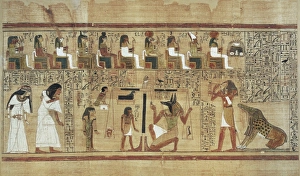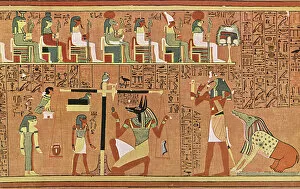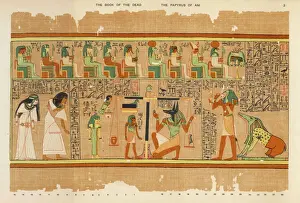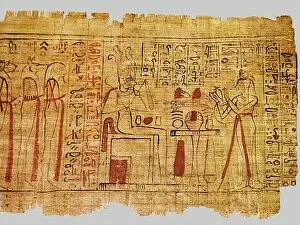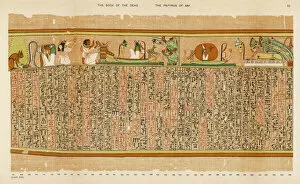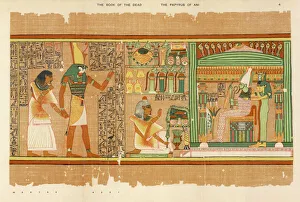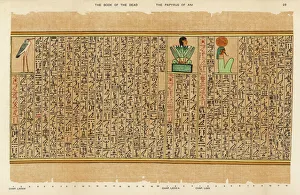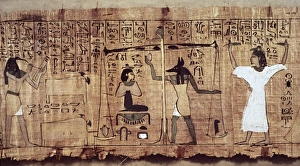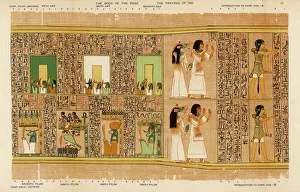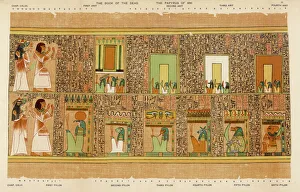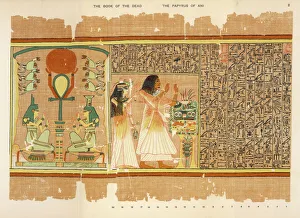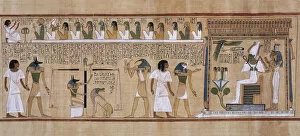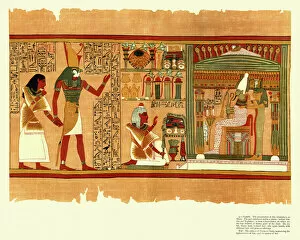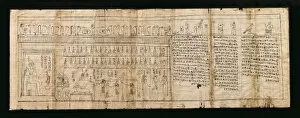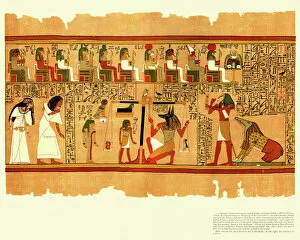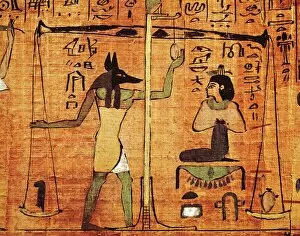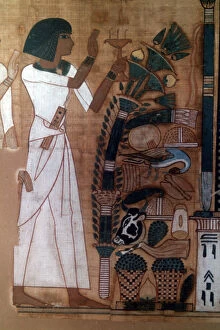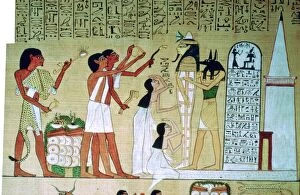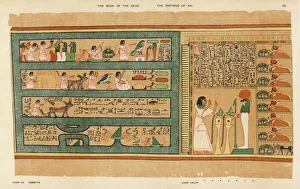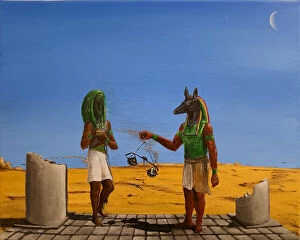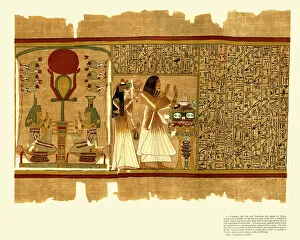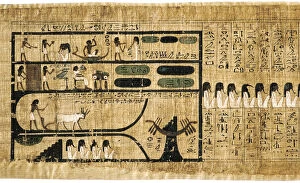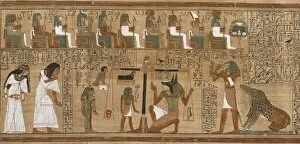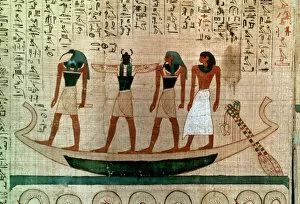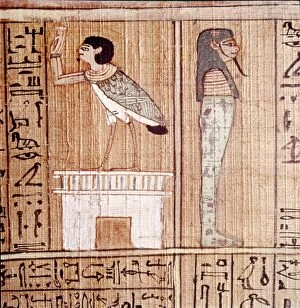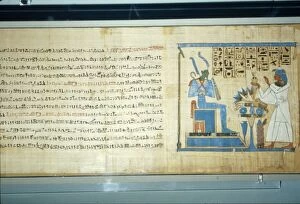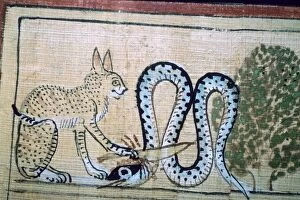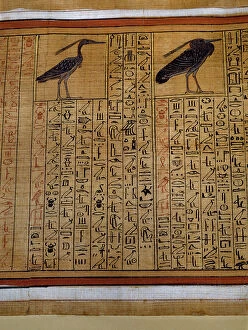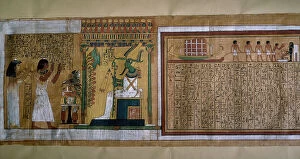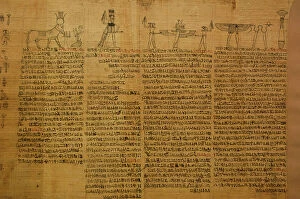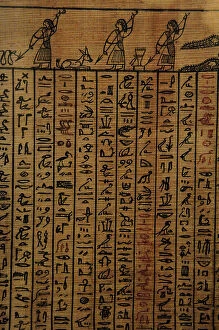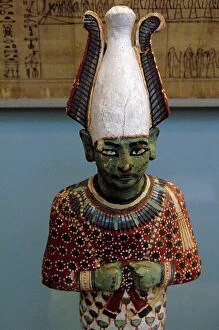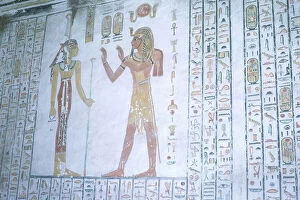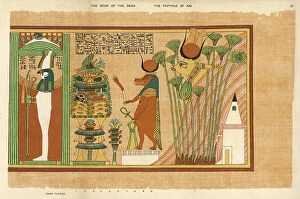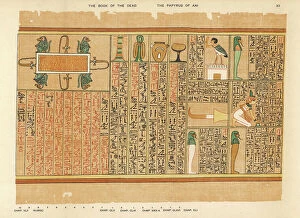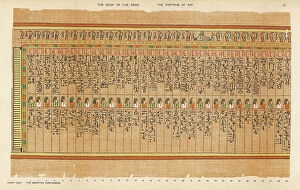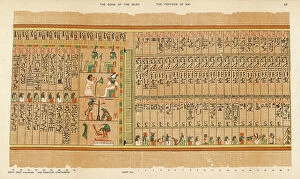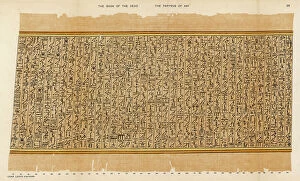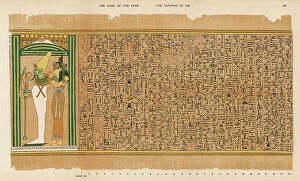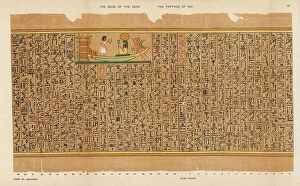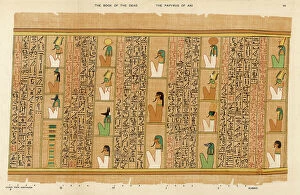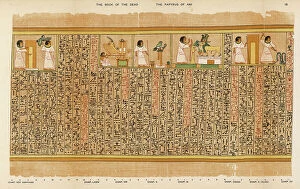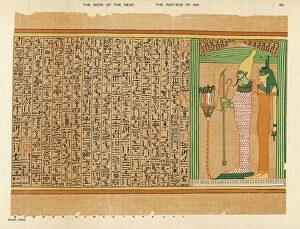Book of the Dead Collection
Book of the Dead is an ancient Egyptian funerary text that contains spells and instructions for the deceased to navigate their journey through the afterlife
Choose a picture from our Book of the Dead Collection for your Wall Art and Photo Gifts
201 items
All Professionally Made to Order for Quick Shipping
-
Book of the Dead Collection
Book of the Dead is an ancient Egyptian funerary text that contains spells and instructions for the deceased to navigate their journey through the afterlife. The book was believed to be a guidebook for the soul, providing protection from evil spirits and ensuring a successful transition into the next world. Popular themes in Book of the Dead include judgment by Osiris, god of death and resurrection, as well as depictions of various gods and goddesses who assist or hinder the deceased on their journey. The book also includes illustrations depicting scenes from daily life, such as farming or fishing, which were believed to provide comfort and familiarity to the departed.
+
Our beautiful pictures are available as Framed Prints, Photos, Wall Art and Photo Gifts
The Book of the Dead is a collection of ancient Egyptian funerary texts that were written on papyrus and placed in tombs to guide the deceased through the afterlife. The Media Storehouse offers a range of wall art and framed prints featuring popular themes from this fascinating collection. One such theme is the weighing of the heart ceremony, where the heart of the deceased was weighed against a feather to determine their worthiness for eternal life. Another popular theme is Anubis, who was responsible for guiding souls through the underworld. The artwork in our collection showcases intricate hieroglyphics and colorful illustrations depicting various gods and goddesses associated with death and rebirth. These pieces are perfect for those interested in ancient Egypt or anyone looking to add an exotic touch to their home decor. The Book of Dead collection from Media Storehouse provides a unique glimpse into one of history's most intriguing cultures while offering stunning artwork suitable for any living space.
+
What are Book of the Dead (Popular Themes) art prints?
Book of the Dead art prints are a collection of high-quality reproductions of ancient Egyptian funerary texts and illustrations. These prints depict various scenes from the Book of the Dead, which was believed to guide the deceased through their journey into the afterlife. The Book of the Dead is a compilation of spells, prayers, and rituals that were written on papyrus scrolls and buried with mummies in tombs. The Popular Themes collection includes some of the most iconic images from this ancient text, such as Anubis weighing a heart against a feather or Horus protecting Osiris. These prints are perfect for anyone interested in ancient Egypt or mythology, as well as those who appreciate beautiful artwork. Each print is carefully reproduced using state-of-the-art printing technology to ensure that every detail is captured accurately. They are available in various sizes and formats to suit different preferences and budgets. Whether you're looking for something small to display on your desk or a large statement piece for your living room wall, there's sure to be a Book of the Dead art print that fits your needs.
+
What Book of the Dead (Popular Themes) art prints can I buy from Media Storehouse?
We offer a wide range of Book of the Dead art prints that you can purchase. These prints are perfect for those who are interested in ancient Egyptian culture and mythology. Some popular themes include Anubis, Horus, Osiris, and Ra. You can choose from a variety of sizes and formats such as canvas prints, framed prints, or photographic prints. Each print is carefully crafted to capture the intricate details and vibrant colors of these iconic figures. Whether you're looking for a statement piece to hang in your living room or office or simply want to add some cultural flair to your home decor, we have something for everyone. In addition to traditional art prints, we also offer digital downloads so that you can enjoy these stunning images on your computer or mobile device. With our extensive collection of Book of the Dead art prints, Media Storehouse is sure to have something that will appeal to any fan of ancient Egyptian history and mythology.
+
How do I buy Book of the Dead (Popular Themes) art prints?
To purchase Book of the Dead art prints from Media Storehouse, you can browse our online collection of artwork and select the specific print that you would like to purchase. Once you have found your desired print, simply add it to your cart and proceed to checkout. During the checkout process, you will be prompted to enter your shipping and payment information. We offer a variety of payment options including credit card, PayPal, and Apple Pay. After completing your order, you will receive an email confirmation with details about your purchase. If you have any questions or concerns about purchasing Book of the Dead art prints from Media Storehouse, our customer service team is available to assist you via phone or email. They are committed to providing excellent customer service and ensuring that every customer is satisfied with their purchase.
+
How much do Book of the Dead (Popular Themes) art prints cost?
The cost of Book of the Dead art prints varies depending on a few factors. The size and type of print, as well as the artist or photographer who created it, can all affect the price. Generally speaking, smaller prints will be less expensive than larger ones, while limited edition or signed prints may command a higher price tag. It's also worth noting that prices for Book of the Dead art prints may vary between different retailers or galleries. Some sellers may offer discounts or promotions from time to time, so it's always worth shopping around to find the best deal. Ultimately, if you're interested in purchasing a Book of the Dead art print for your home or office decor collection, you'll need to do some research to determine what options are available and how much they cost.
+
How will my Book of the Dead (Popular Themes) art prints be delivered to me?
Your Book of the Dead art prints will be delivered to you in a safe and secure manner by Media Storehouse. The company takes great care in packaging your order so that it arrives at your doorstep undamaged. Your prints will be carefully rolled up and placed inside a sturdy cardboard tube, which is then sealed with tape to prevent any moisture or dirt from entering. Media Storehouse uses reliable shipping carriers to deliver your package right to your door. You can track the progress of your delivery through our website using the tracking number provided after dispatch. The art prints are printed on high-quality paper using state-of-the-art printing technology, ensuring that they look stunning and vibrant when displayed on your wall. Whether you're looking for a unique piece of decor for your home or office, or simply want to add some personality to an empty space, these art prints are sure to impress.

